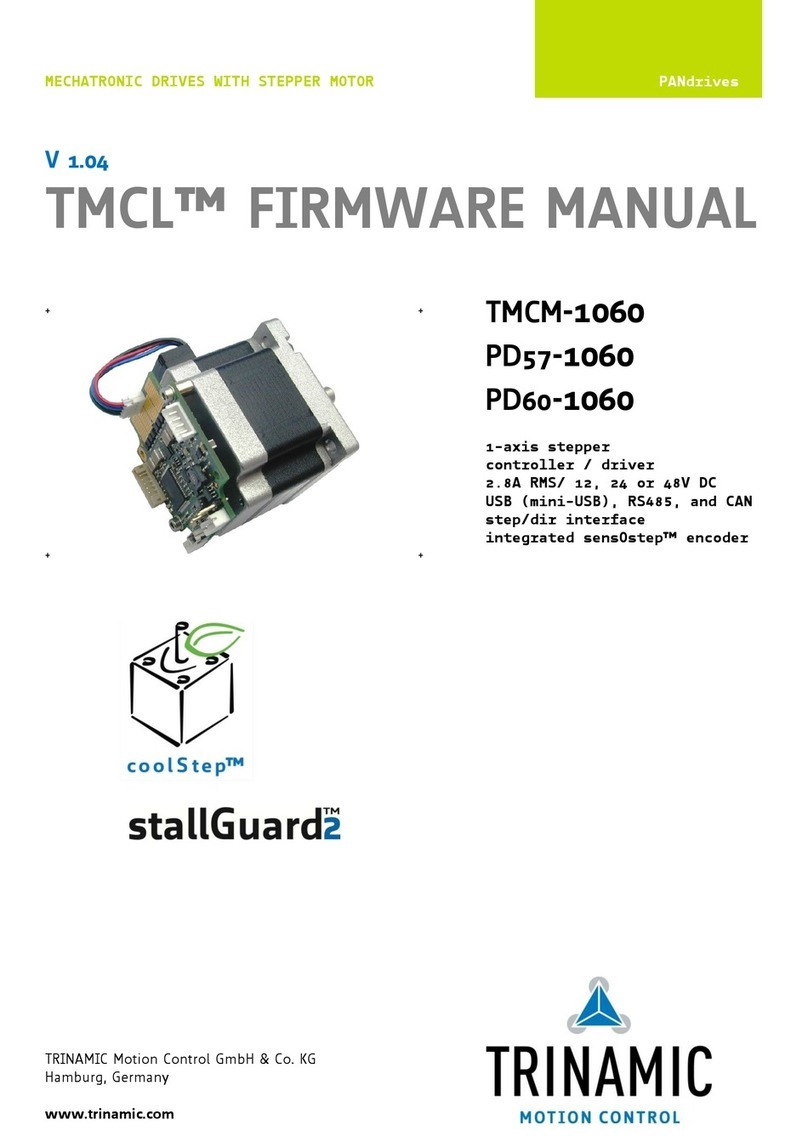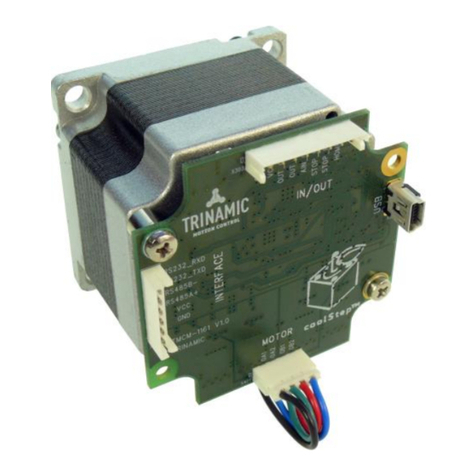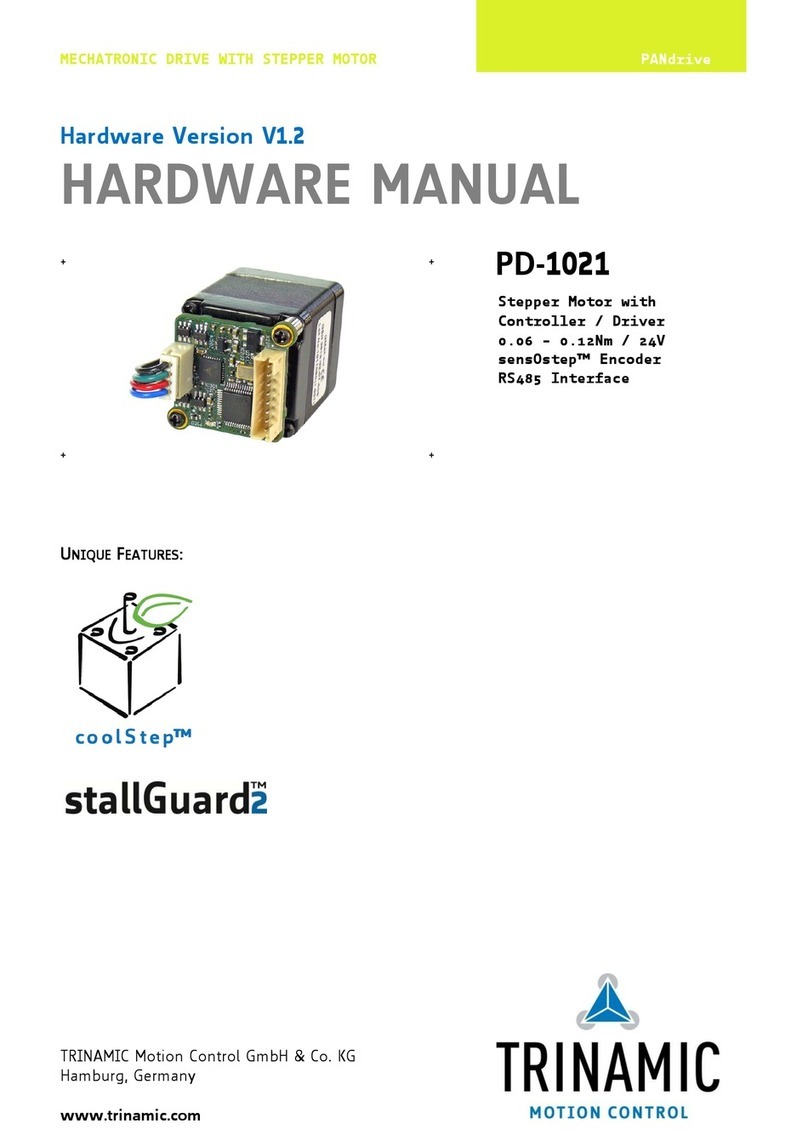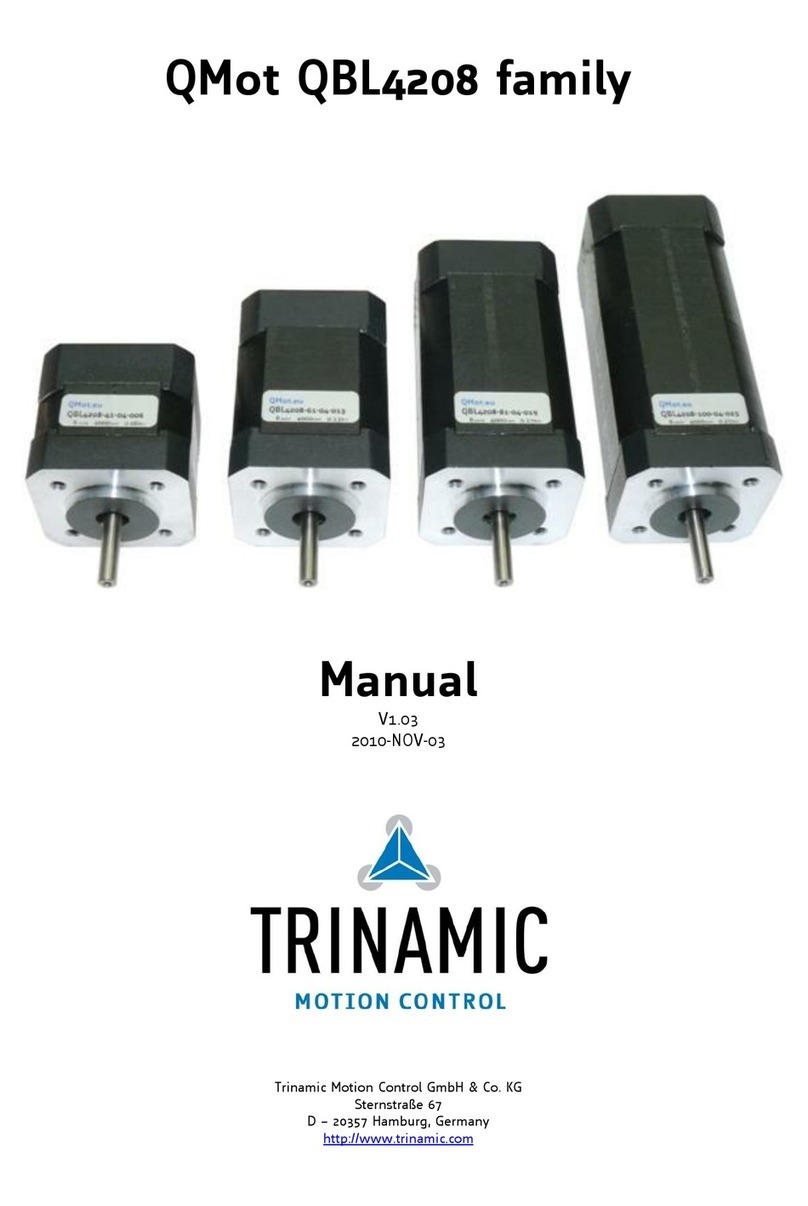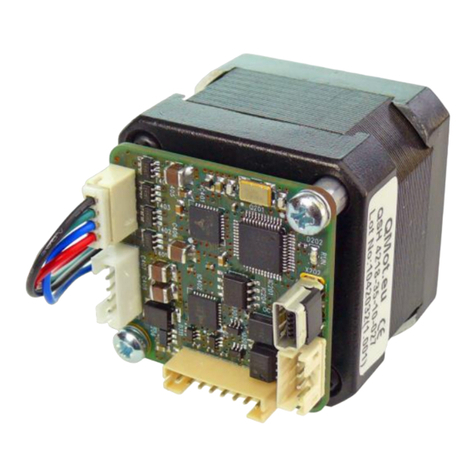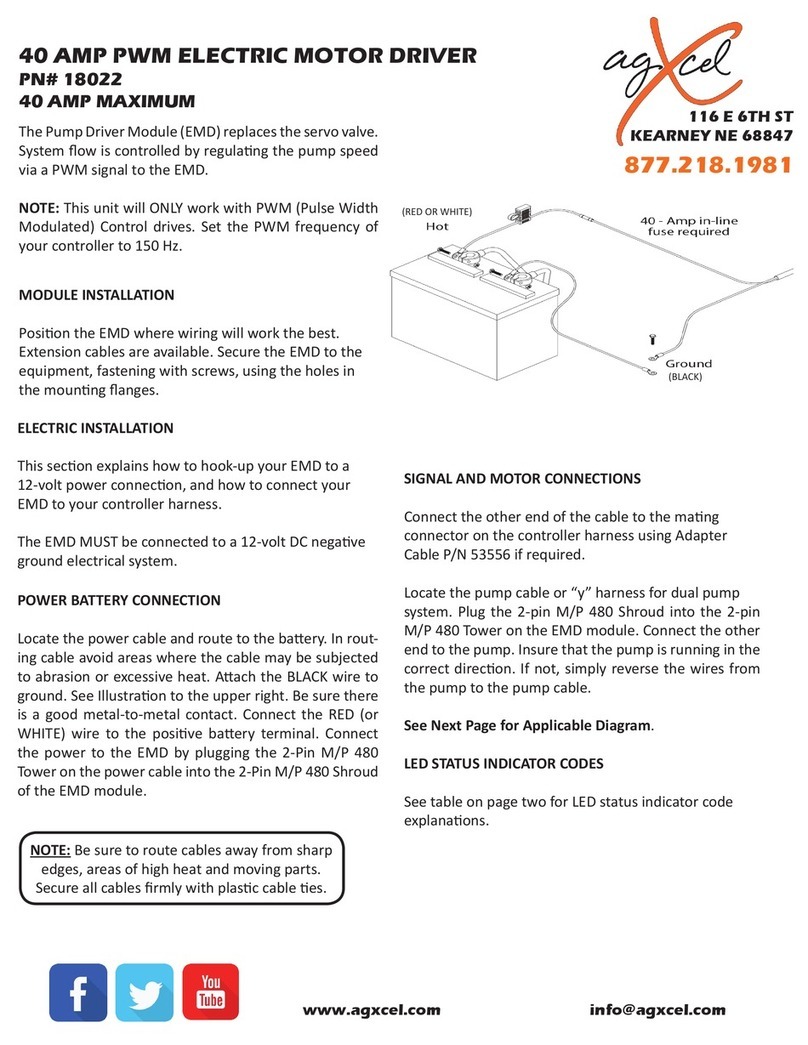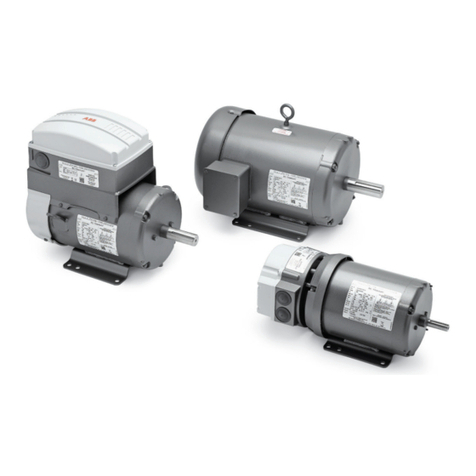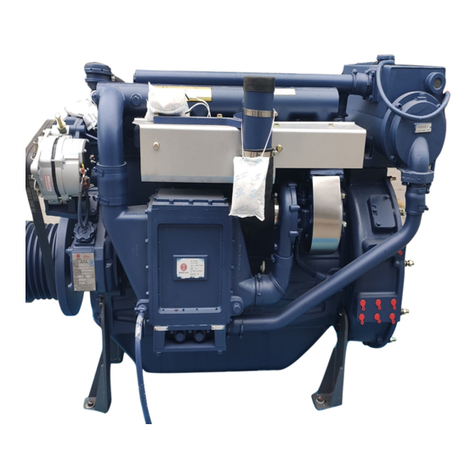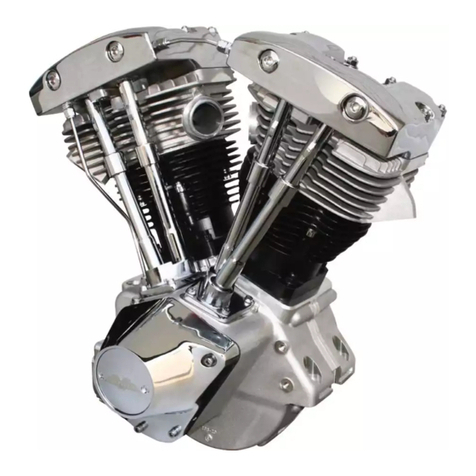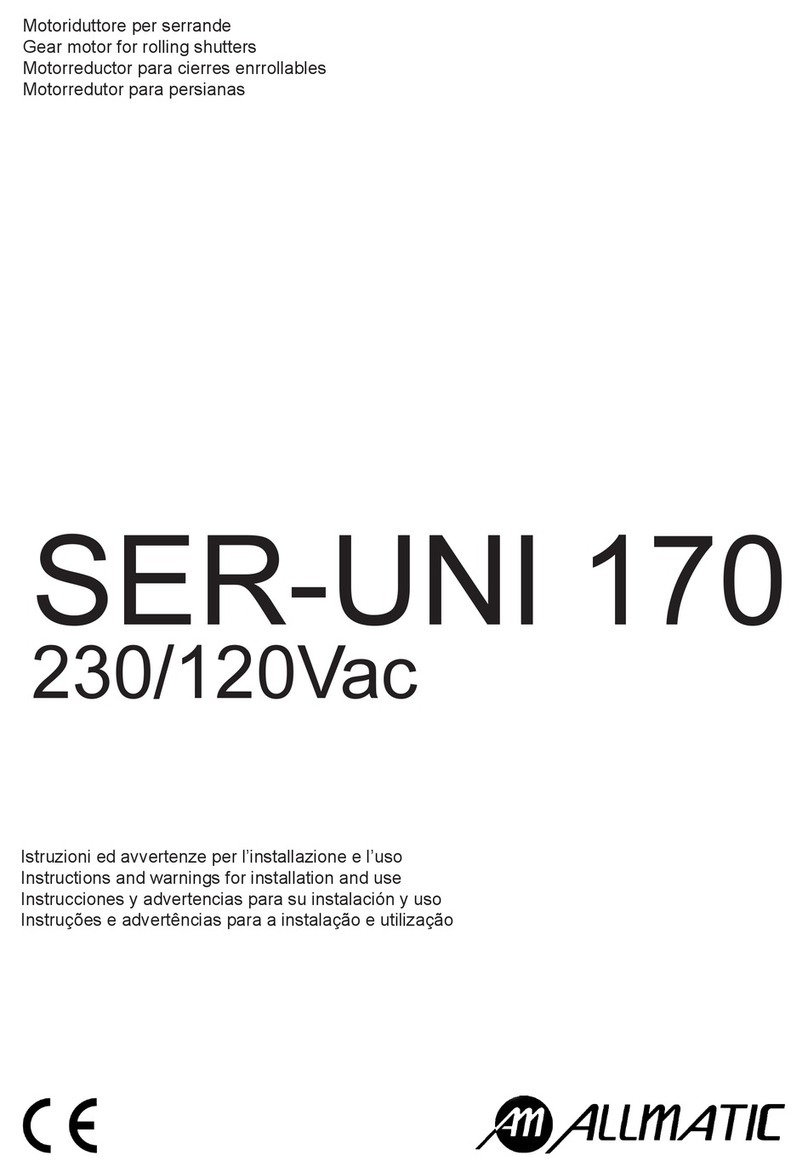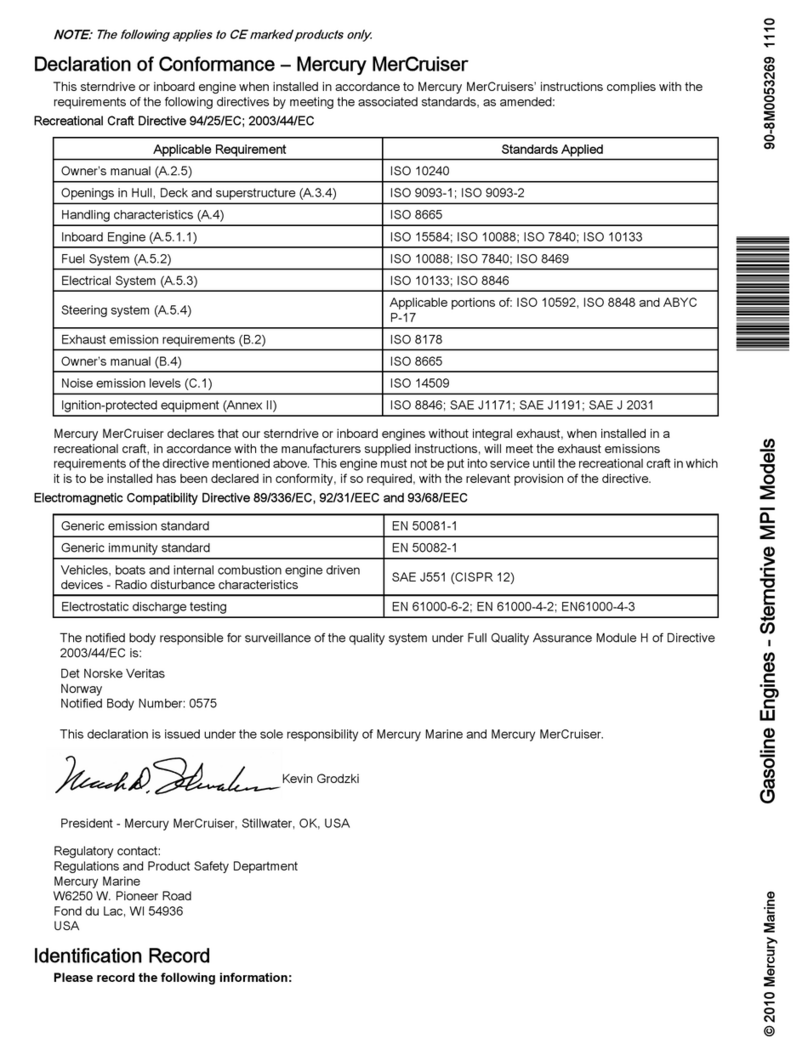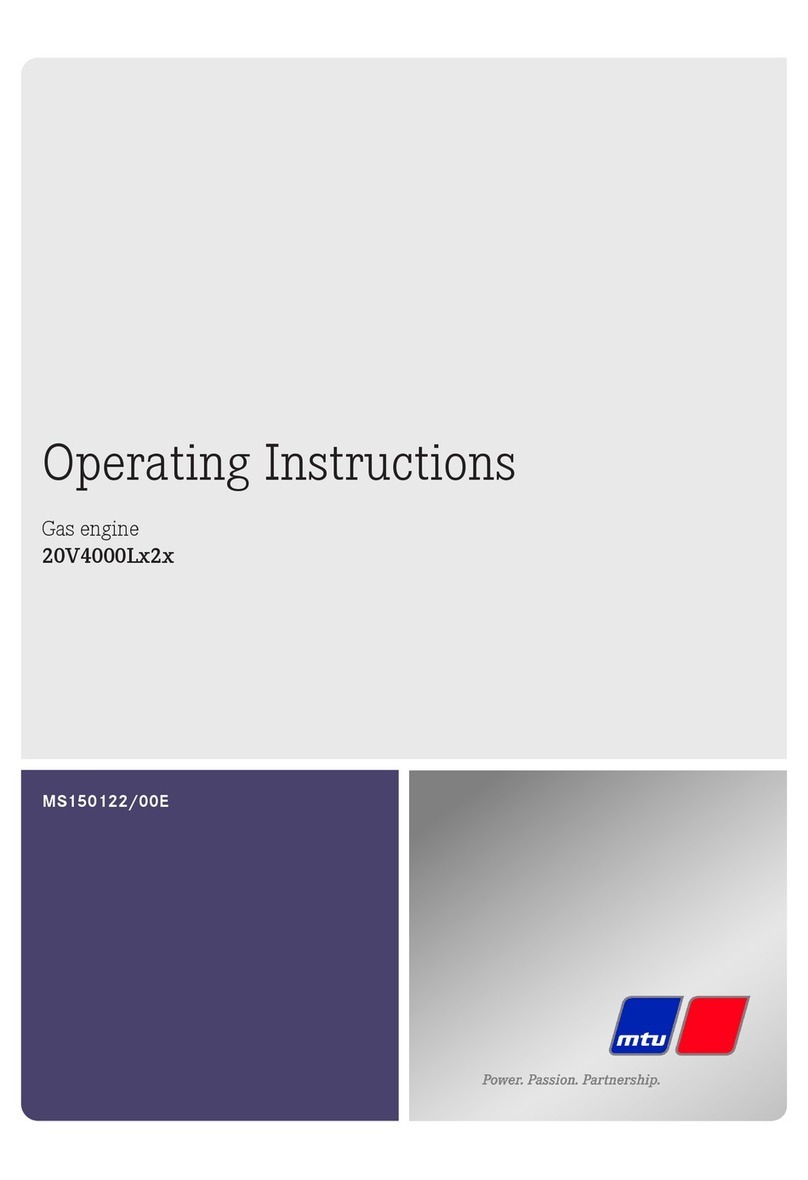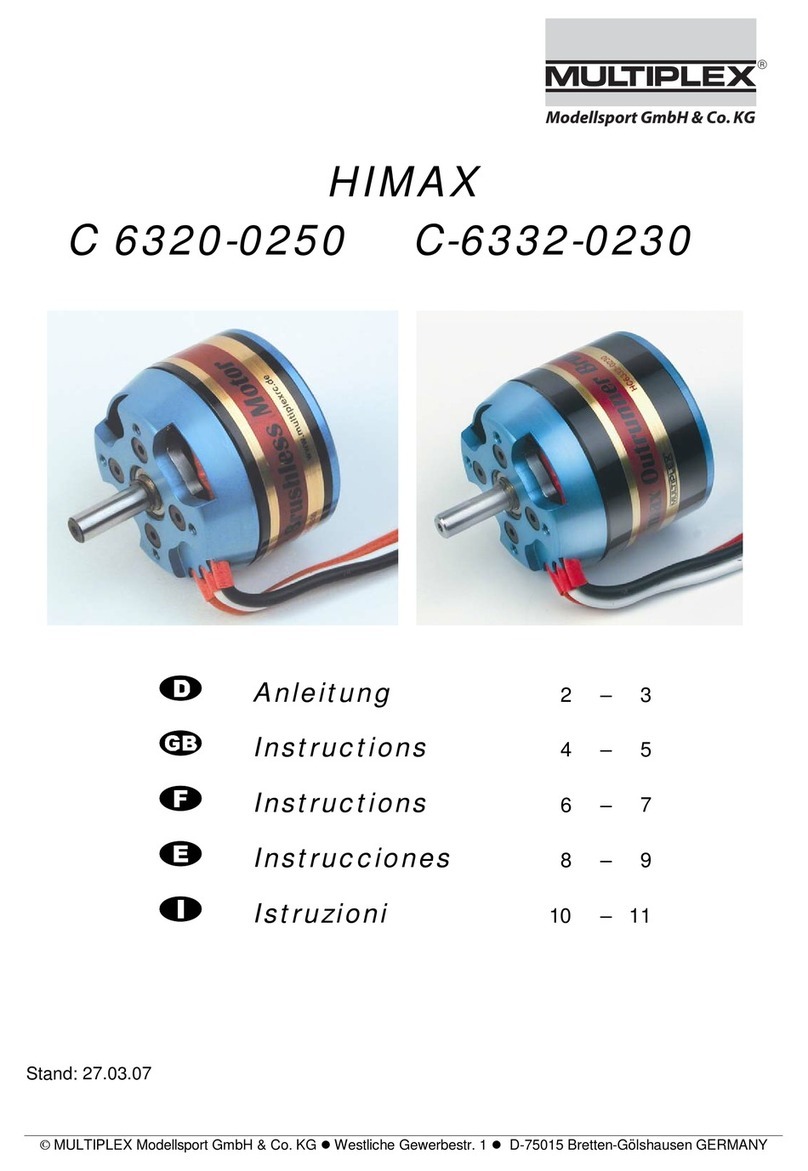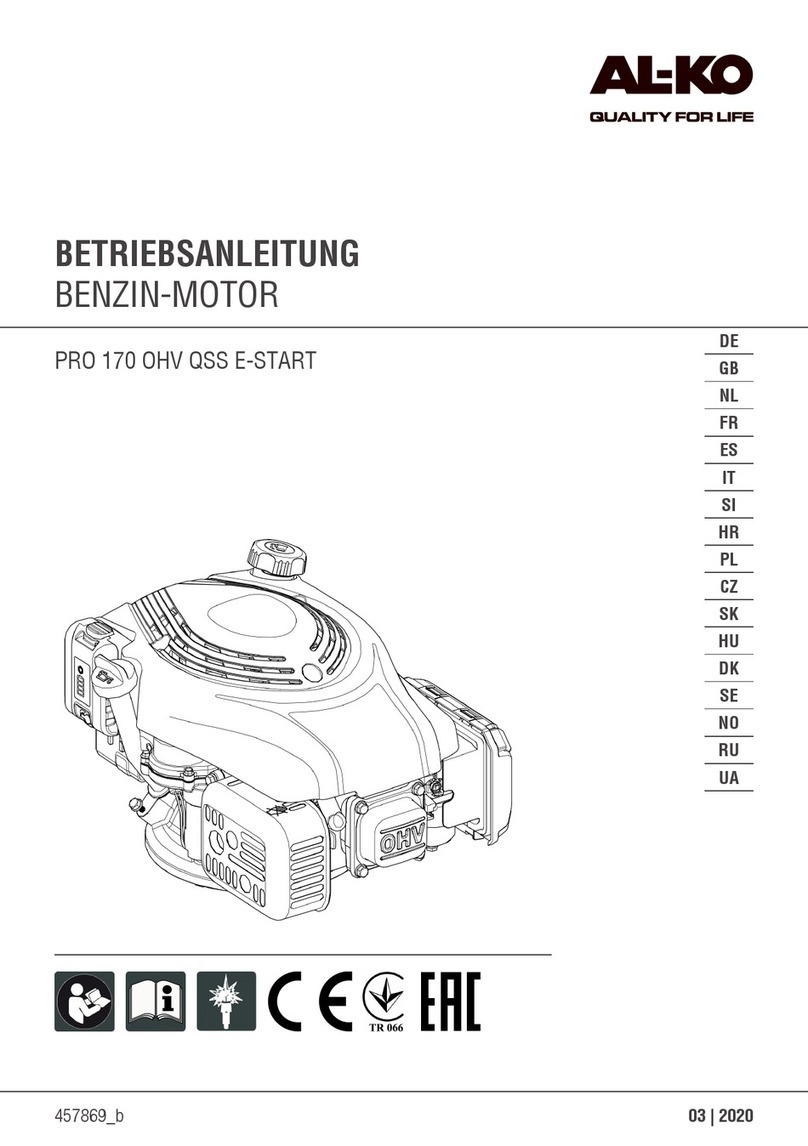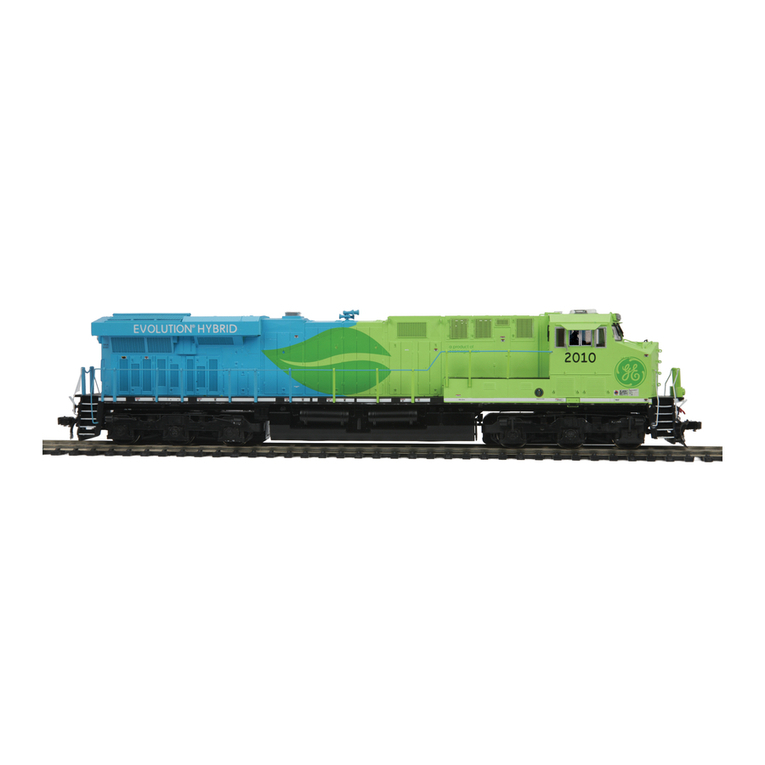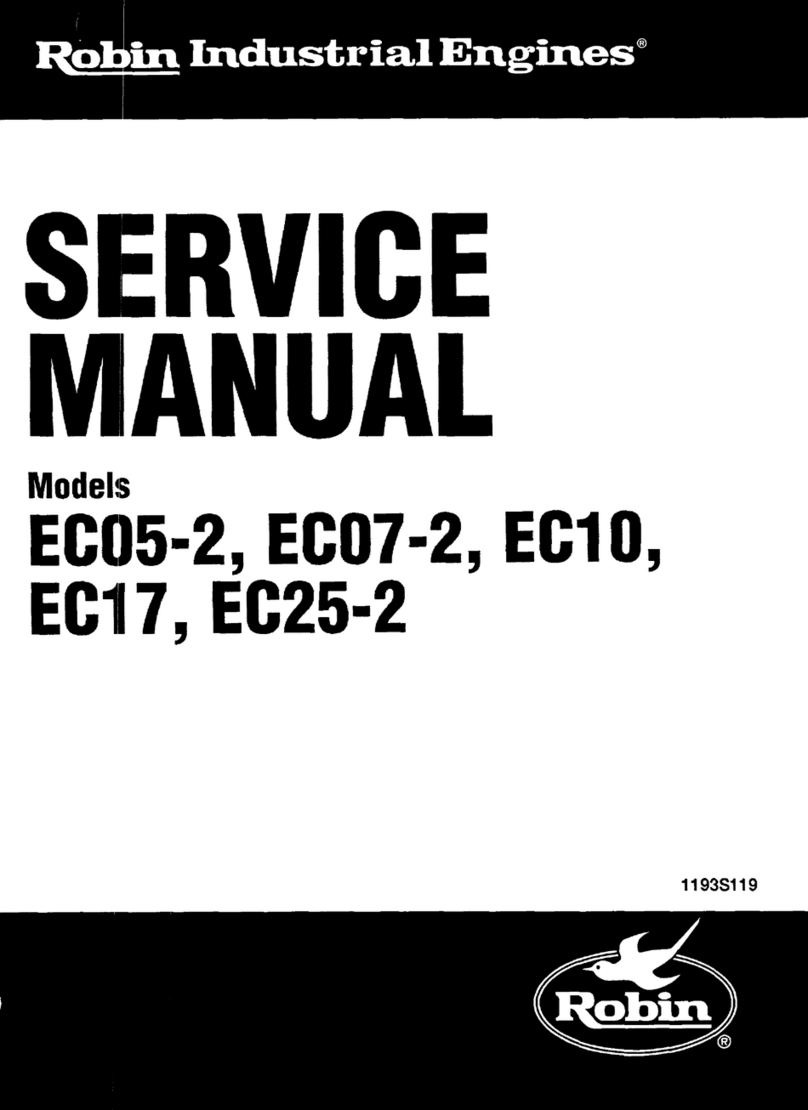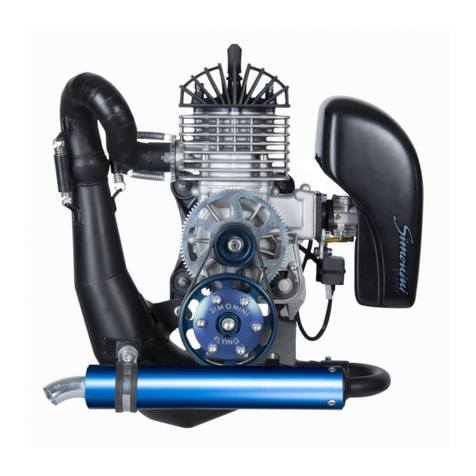Trinamic PANdrive PD-1021 Use and care manual

MECHATRONIC DRIVE WITH STEPPER MOTOR PANdrive
TRINAMIC Motion Control GmbH & Co. KG
Hamburg, Germany
www.trinamic.com
Firmware Version V1.29
TMCL™ FIRMWARE MANUAL
++PD-1021
+ +
UNIQUE FEATURES:
Stepper Motor with
Controller / Driver
0.06 - 0.12Nm / 24V
sensOstep™Encoder
RS485 Interface

PD-1021 TMCL Firmware V1.29 Manual (Rev. 1.06 / 2014-APR-14) 2
www.trinamic.com
Table of Contents
1Features........................................................................................................................................................................... 4
2Putting the PANdrive into Operation ..................................................................................................................... 6
2.1 Basic Set-Up .......................................................................................................................................................... 6
2.1.1 Connecting the Module ............................................................................................................................... 6
2.1.2 Start the TMCL-IDE Software Development Environment ................................................................. 7
2.2 Using TMCL Direct Mode.................................................................................................................................... 8
2.2.1 Important Motor Settings........................................................................................................................... 9
2.3 Testing with a Simple TMCL Program......................................................................................................... 10
3TMCL and the TMCL-IDE: Introduction ................................................................................................................. 11
3.1 Binary Command Format ................................................................................................................................ 11
3.2 Reply Format....................................................................................................................................................... 12
3.2.1 Status Codes ................................................................................................................................................. 13
3.3 Standalone Applications.................................................................................................................................. 13
3.4 TMCL Command Overview .............................................................................................................................. 13
3.4.1 TMCL Commands ......................................................................................................................................... 13
3.4.2 Commands Listed According to Subject Area .................................................................................... 14
3.5 Commands........................................................................................................................................................... 18
3.5.1 ROR (rotate right) ........................................................................................................................................ 18
3.5.2 ROL (rotate left) ........................................................................................................................................... 19
3.5.3 MST (motor stop)......................................................................................................................................... 20
3.5.4 MVP (move to position) ............................................................................................................................ 21
3.5.5 SAP (set axis parameter) ........................................................................................................................... 23
3.5.6 GAP (get axis parameter) .......................................................................................................................... 24
3.5.7 STAP (store axis parameter) ..................................................................................................................... 25
3.5.8 RSAP (restore axis parameter) ................................................................................................................. 26
3.5.9 SGP (set global parameter) ...................................................................................................................... 27
3.5.10 GGP (get global parameter)...................................................................................................................... 28
3.5.11 STGP (store global parameter) ................................................................................................................ 29
3.5.12 RSGP (restore global parameter) ............................................................................................................ 30
3.5.13 RFS (reference search)................................................................................................................................ 31
3.5.14 SIO (set output) ........................................................................................................................................... 32
3.5.15 GIO (get input/output) ............................................................................................................................... 34
3.5.16 CALC (calculate)............................................................................................................................................ 36
3.5.17 COMP (compare)........................................................................................................................................... 37
3.5.18 JC (jump conditional) ................................................................................................................................. 38
3.5.19 JA (jump always) ......................................................................................................................................... 39
3.5.20 CSUB (call subroutine) ............................................................................................................................... 40
3.5.21 RSUB (return from subroutine)................................................................................................................ 41
3.5.22 WAIT (wait for an event to occur)......................................................................................................... 42
3.5.23 STOP (stop TMCL program execution) ................................................................................................... 43
3.5.24 SCO (set coordinate)................................................................................................................................... 44
3.5.25 GCO (get coordinate).................................................................................................................................. 45
3.5.26 CCO (capture coordinate) .......................................................................................................................... 46
3.5.27 ACO.................................................................................................................................................................. 47
3.5.28 CALCX (calculate using the X register) .................................................................................................. 48
3.5.29 AAP (accumulator to axis parameter).................................................................................................... 49
3.5.30 AGP (accumulator to global parameter) ............................................................................................... 50
3.5.31 CLE (clear error flags) ................................................................................................................................. 51
3.5.32 VECT (set interrupt vector)........................................................................................................................ 52
3.5.33 EI (enable interrupt) ................................................................................................................................... 53
3.5.34 DI (disable interrupt).................................................................................................................................. 54
3.5.35 RETI (return from interrupt) ..................................................................................................................... 55
3.5.36 Customer Specific TMCL Command Extension (UF0… UF7/user function) ................................... 56
3.5.37 Request Target Position Reached Event ............................................................................................... 57
3.5.38 TMCL Control Functions............................................................................................................................. 58
4Axis Parameters .......................................................................................................................................................... 60

PD-1021 TMCL Firmware V1.29 Manual (Rev. 1.06 / 2014-APR-14) 3
www.trinamic.com
4.1 Velocity Calculation........................................................................................................................................... 66
4.2 stallGuard2........................................................................................................................................................... 67
4.3 coolStep Related Axis Parameters ................................................................................................................ 67
5Global parameters...................................................................................................................................................... 69
5.1 Bank 0................................................................................................................................................................... 69
5.2 Bank 1................................................................................................................................................................... 70
5.3 Bank 2................................................................................................................................................................... 71
5.4 Bank 3................................................................................................................................................................... 72
6Hints and Tips ............................................................................................................................................................. 73
6.1 Reference Search ............................................................................................................................................... 73
6.2 Changing the Prescaler Value of an Encoder............................................................................................ 76
6.3 Using the RS485 Interface .............................................................................................................................. 76
7TMCL Programming Techniques and Structure ................................................................................................. 77
7.1 Initialization ........................................................................................................................................................ 77
7.2 Main Loop............................................................................................................................................................ 77
7.3 Using Symbolic Constants .............................................................................................................................. 77
7.4 Using Variables .................................................................................................................................................. 78
7.5 Using Subroutines............................................................................................................................................. 78
7.6 Mixing Direct Mode and Standalone Mode................................................................................................ 79
8Life Support Policy..................................................................................................................................................... 80
9Revision History.......................................................................................................................................................... 81
9.1 Document Revision ........................................................................................................................................... 81
9.2 Firmware Revision ............................................................................................................................................ 81
10 References .................................................................................................................................................................... 82

PD-1021 TMCL Firmware V1.29 Manual (Rev. 1.06 / 2014-APR-14) 4
www.trinamic.com
1Features
The PANdrive™ PD-1021 is a full mechatronic solution with state of the art feature set. It is highly
integrated and offers a convenient handling. The PD-1021 includes a stepper motor, controller/driver
electronics, and TRINAMICs sensOstep™ encoder. It can be used in many decentralized applications and
has been designed for 0.06… 0.12 Nm max. holding torque and 24V DC nominal supply voltage. With its
high energy efficiency from TRINAMIC’s coolStep technology cost for power consumption is kept down. The
TMCL™ firmware allows for standalone operation and direct mode.
MAIN CHARACTERISTICS
Highlights
-Motion profile calculation in real-time
-On the fly alteration of motor parameters (e.g. position, velocity, acceleration)
-High performance microcontroller for overall system control and serial communication protocol
handling
-For position movement applications, where larger motors do not fit and higher torques are not
required
Bipolar stepper motor driver
-Up to 256 microsteps per full step
-High-efficient operation, low power dissipation
-Dynamic current control
-Integrated protection
-stallGuard2 feature for stall detection
-coolStep feature for reduced power consumption and heat dissipation
Encoder
-sensOstep magnetic encoder (max. 1024 increments per rotation) e.g. for step-loss detection under
all operating conditions and positioning supervision
Interfaces
-Up to 4 multipurpose inputs (2 shared with outputs)
-2 general purpose outputs
-RS485 2-wire communication interface
Software
-TMCL: standalone operation or remote controlled operation,
program memory (non volatile) for up to 876 TMCL commands, and
PC-based application development software TMCL-IDE available for free.
Electrical and mechanical data
-Supply voltage: +24V DC nominal (9… 28V DC)
-Motor current: up to 0.7A RMS (programmable)
-0.06 or 0.12Nm max. holding torque (depends on motor)
Refer to separate TMCL Hardware Manual, too.

PD-1021 TMCL Firmware V1.29 Manual (Rev. 1.06 / 2014-APR-14) 5
www.trinamic.com
TRINAMICS UNIQUE FEATURES –EASY TO USE WITH TMCL
stallGuard2™stallGuard2 is a high-precision sensorless load measurement using the back EMF on the
coils. It can be used for stall detection as well as other uses at loads below those which
stall the motor. The stallGuard2 measurement value changes linearly over a wide range
of load, velocity, and current settings. At maximum motor load, the value goes to zero or
near to zero. This is the most energy-efficient point of operation for the motor.
Load
[Nm]
stallGuard2
Initial stallGuard2
(SG) value: 100%
Max. load
stallGuard2 (SG) value: 0
Maximum load reached.
Motor close to stall.
Motor stalls
Figure 1.1 stallGuard2 load measurement SG as a function of load
coolStep™coolStep is a load-adaptive automatic current scaling based on the load measurement via
stallGuard2 adapting the required current to the load. Energy consumption can be
reduced by as much as 75%. coolStep allows substantial energy savings, especially for
motors which see varying loads or operate at a high duty cycle. Because a stepper motor
application needs to work with a torque reserve of 30% to 50%, even a constant-load
application allows significant energy savings because coolStep automatically enables
torque reserve when required. Reducing power consumption keeps the system cooler,
increases motor life, and allows reducing cost.
0
0,1
0,2
0,3
0,4
0,5
0,6
0,7
0,8
0,9
0 50 100 150 200 250 300 350
Efficiency
Velocity [RPM]
Efficiency with coolStep
Efficiency with 50% torque reserve
Figure 1.2 Energy efficiency example with coolStep

PD-1021 TMCL Firmware V1.29 Manual (Rev. 1.06 / 2014-APR-14) 6
www.trinamic.com
2Putting the PANdrive into Operation
Here you can find basic information for putting your PD-1021 into operation. If you are already common
with TRINAMICs modules you may skip this chapter.
The things you need:
-PD-1021
-RS485 interface converter with cables
-Nominal supply voltage +24V DC for your PANdrive
-TMCL-IDE program and PC
2.1 Basic Set-Up
The following paragraph will guide you through the steps of connecting the unit and making first
movements with the motor.
2.1.1 Connecting the Module
PRECAUTIONS
Do not connect or disconnect the PD-1021 while powered!
Do not connect or disconnect the motor while powered!
Do not exceed the maximum power supply voltage of 28V DC!
Note, that the module is not protected against reverse polarity!
START WITH POWER SUPPLY OFF!
Motor
Pin 1 B2
Pin 2 B1
Pin 3 A2
Pin 4 A1
Converter
e.g. USB-2-485
1
1
RS485
Pin 1 GND
Pin 3 RS485+
Pin 4 RS485-
Note, that the
GND pin has to be
used for the
power supply and
for the RS485
interface.
Power Supply
Pin 1 GND
Pin 2 9… 28V DC
Figure 2.1: Starting up
1. Connect RS485 interface and power supply
Pin
Label
Description
1
GND
GND
2
VDD
VDD (+9V…+28V)
3
RS485+
RS485 interface, diff. signal (non-
inverting)
4
RS485-
RS485 interface, diff. signal (inverting)
5
IN_0
Digital input (+24V compatible)
Alternate function 1: step input
Alternate function 2: left stop switch
6
IN_1
Digital input (+24V compatible)
Alternate function 1: direction input
Alternate function 2: right stop switch
7
OUT_0 / IN_2
Open drain output with freewheeling
diode
(max. 100mA)
Alternate function 1:
digital input (+24V compatible)
Alternate function 2:home switch
8
OUT_1 / IN_3
Open drain output with freewheeling
diode (max. 100mA)
Alternate function 1: digital input
(+24V compatible)
Alternate function 2: analog input

PD-1021 TMCL Firmware V1.29 Manual (Rev. 1.06 / 2014-APR-14) 7
www.trinamic.com
2. Switch ON the power supply
Turn power ON. The green LED for power lights up and the motor is powered but in standstill
now.
If this does not occur, switch power OFF and check your connections as well as the power
supply.
2.1.2 Start the TMCL-IDE Software Development Environment
The TMCL-IDE is available on www.trinamic.com.
Installing the TMCL-IDE:
Make sure the COM port you intend to use is not blocked by another program.
Open TMCL-IDE by clicking TMCL.exe.
Choose Setup and Options and thereafter the Connection tab.
Choose COM port and type with the parameters shown in Figure 2.2 (baud rate 9600). Click OK.
Figure 2.2 Setup dialogue and connection tab of the TMCL-IDE.
Please refer to the TMCL-IDE User Manual for more information (see www.TRINAMIC.com).

PD-1021 TMCL Firmware V1.29 Manual (Rev. 1.06 / 2014-APR-14) 8
www.trinamic.com
2.2 Using TMCL Direct Mode
1. Start TMCL Direct Mode.
Direct Mode
2. If the communication is established the PD-1021 is automatically detected. If the module is not
detected, please check all points above (cables, interface, power supply, COM port, baud
rate).
3. Issue a command by choosing Instruction, Type (if necessary), Motor, and Value and click
Execute to send it to the module.
Examples:
ROR rotate right, motor 0, value 10000 -> Click Execute. The first motor is rotating now.
MST motor stop, motor 0 -> Click Execute. The first motor stops now.
Top right of the TMCL Direct Mode window is the button Copy to editor. Click here to copy the chosen
command and create your own TMCL program. The command will be shown immediately on the editor.
Note:
Please mind chapter 7 (programming techniques) of the TMCL-IDE User Manual on www.trinamic.com.
Here you will find information about creating general structures of TMCL programs. In particular
initialization, main loop, symbolic constants, variables, and subroutines are described there. Further you
can learn how to mix direct mode and stand alone mode.
Chapter 4.3 of this manual includes a diagram which points out the coolStep related axis parameters and
their functions. This can help you configuring your module to meet your needs.

PD-1021 TMCL Firmware V1.29 Manual (Rev. 1.06 / 2014-APR-14) 9
www.trinamic.com
2.2.1 Important Motor Settings
There are some axis parameters which have to be adjusted right in the beginning after installing your
module. Please set the upper limiting values for the speed (axis parameter 4), the acceleration (axis
parameter 5), and the current (axis parameter 6). Further set the standby current (axis parameter 7) and
choose your microstep resolution with axis parameter 140. Please use the SAP (Set Axis Parameter)
command for adjusting these values. The SAP command is described in paragraph 3.5.5. You can use the
TMCL-IDE direct mode for easily configuring your module.
IMPORTANT AXIS PARAMETERS FOR MOTOR SETTING
Number
Axis Parameter
Description
Range [Unit]
4
Maximum
positioning
speed
Maximum feasible positioning speed. Has to be
adapted to motor and application
0… +268.435.454
[pps/s]
5
Maximum
acceleration
Limit for acceleration and deceleration. Has to be
adapted to motor and application.
1… +33554431
[pps/s]
6
Absolute max.
current
(CS / Current
Scale)
The maximum value is 255. This value means 100% of
the maximum current of the module. The current
adjustment is within the range 0… 255 and can be
adjusted in 32 steps.
The most important motor setting, since too high
values might cause motor damage!
0… 7
79…87
160… 167
240… 247
8… 15
88… 95
168… 175
248… 255
16… 23
96… 103
176… 183
24… 31
104… 111
184… 191
32… 39
112… 119
192… 199
40… 47
120… 127
200… 207
48… 55
128… 135
208… 215
56… 63
136… 143
216… 223
64… 71
144… 151
224… 231
72… 79
152… 159
232… 239
0… 255
7
Standby current
The current limit two seconds after the motor has
stopped.
0… 255
140
Microstep
resolution
0
full step
1
half step
2
4 microsteps
3
8 microsteps
4
16 microsteps
5
32 microsteps
6
64 microsteps
7
128 microsteps
8
256 microsteps
0… 8
ATTENTION
The most important motor setting is the absolute maximum motor current setting, since too high values
might cause motor damage!

PD-1021 TMCL Firmware V1.29 Manual (Rev. 1.06 / 2014-APR-14) 10
www.trinamic.com
2.3 Testing with a Simple TMCL Program
Type in the following program:
Assemble
Download Run
Stop
1. Click the Assemble icon to convert the TMCL program into binary code.
2. Then download the program to the PD-1021 by clicking the Download icon.
3. Click the Run icon. The desired program will be executed.
4. Click the Stop button to stop the program.
ROL 0, 50000 //Rotate motor 0 with speed 50000
WAIT TICKS, 0, 500
MST 0
ROR 0, 50000 //Rotate motor 0 with 50000
WAIT TICKS, 0, 500
MST 0
SAP 4, 0, 50000 //Set max. Velocity
SAP 5, 0, 50000 //Set max. Acceleration
Loop: MVP ABS, 0, 100000//Move to Position 100000
WAIT POS, 0, 0 //Wait until position reached
MVP ABS, 0, -100000//Move to Position -100000
WAIT POS, 0, 0 //Wait until position reached
JA Loop //Infinite Loop

PD-1021 TMCL Firmware V1.29 Manual (Rev. 1.06 / 2014-APR-14) 11
www.trinamic.com
3TMCL and the TMCL-IDE: Introduction
As with most TRINAMIC modules the software running on the microprocessor of the PD-1061 consists of
two parts, a boot loader and the firmware itself. Whereas the boot loader is installed during production
and testing at TRINAMIC and remains untouched throughout the whole lifetime, the firmware can be
updated by the user. New versions can be downloaded free of charge from the TRINAMIC website
(http://www.trinamic.com).
The PD-1021 supports TMCL direct mode (binary commands) and standalone TMCL program execution.
You can store up to 876 TMCL instructions on it.
In direct mode and most cases the TMCL communication over RS485 follows a strict master/slave
relationship. That is, a host computer (e.g. PC/PLC) acting as the interface bus master will send a
command to the PD-1021. The TMCL interpreter on the module will then interpret this command, do the
initialization of the motion controller, read inputs and write outputs or whatever is necessary according
to the specified command. As soon as this step has been done, the module will send a reply back over
RS485 to the bus master. Only then should the master transfer the next command. Normally, the module
will just switch to transmission and occupy the bus for a reply, otherwise it will stay in receive mode. It
will not send any data over the interface without receiving a command first. This way, any collision on
the bus will be avoided when there are more than two nodes connected to a single bus.
The Trinamic Motion Control Language [TMCL] provides a set of structured motion control commands.
Every motion control command can be given by a host computer or can be stored in an EEPROM on the
TMCM module to form programs that run standalone on the module. For this purpose there are not only
motion control commands but also commands to control the program structure (like conditional jumps,
compare and calculating).
Every command has a binary representation and a mnemonic. The binary format is used to send
commands from the host to a module in direct mode, whereas the mnemonic format is used for easy
usage of the commands when developing standalone TMCL applications using the TMCL-IDE (IDE means
Integrated Development Environment).
There is also a set of configuration variables for the axis and for global parameters which allow
individual configuration of nearly every function of a module. This manual gives a detailed description of
all TMCL commands and their usage.
3.1 Binary Command Format
Every command has a mnemonic and a binary representation. When commands are sent from a host to a
module, the binary format has to be used. Every command consists of a one-byte command field, a one-
byte type field, a one-byte motor/bank field and a four-byte value field. So the binary representation of a
command always has seven bytes. When a command is to be sent via RS485 interface, it has to be
enclosed by an address byte at the beginning and a checksum byte at the end. In this case it consists of
nine bytes.
The binary command format for RS485 is as follows:
Bytes
Meaning
1
Module address
1
Command number
1
Type number
1
Motor or Bank number
4
Value (MSB first!)
1
Checksum
The checksum is calculated by adding up all the other bytes using an 8-bit addition.

PD-1021 TMCL Firmware V1.29 Manual (Rev. 1.06 / 2014-APR-14) 12
www.trinamic.com
Checksum calculation
As mentioned above, the checksum is calculated by adding up all bytes (including the module address
byte) using 8-bit addition. Here are two examples to show how to do this:
in C:
unsigned char i, Checksum;
unsigned char Command[9];
//Set the “Command” array to the desired command
Checksum = Command[0];
for(i=1; i<8; i++)
Checksum+=Command[i];
Command[8]=Checksum; //insert checksum as last byte of the command
//Now, send it to the module
in Delphi:
var
i, Checksum: byte;
Command: array[0..8] of byte;
//Set the “Command” array to the desired command
//Calculate the Checksum:
Checksum:=Command[0];
for i:=1 to 7 do Checksum:=Checksum+Command[i];
Command[8]:=Checksum;
//Now, send the “Command” array (9 bytes) to the module
3.2 Reply Format
Every time a command has been sent to a module, the module sends a reply.
The reply format for RS485 is as follows:
Bytes
Meaning
1
Reply address
1
Module address
1
Status (e.g. 100 means “no error”)
1
Command number
4
Value (MSB first!)
1
Checksum
The checksum is also calculated by adding up all the other bytes using an 8-bit addition.
Do not send the next command before you have received the reply!

PD-1021 TMCL Firmware V1.29 Manual (Rev. 1.06 / 2014-APR-14) 13
www.trinamic.com
3.2.1 Status Codes
The reply contains a status code.
The status code can have one of the following values:
Code
Meaning
100
Successfully executed, no error
101
Command loaded into TMCL
program EEPROM
1
Wrong checksum
2
Invalid command
3
Wrong type
4
Invalid value
5
Configuration EEPROM locked
6
Command not available
3.3 Standalone Applications
The module is equipped with an EEPROM for storing TMCL applications. You can use TMCL-IDE for
developing standalone TMCL applications. You can load them down into the EEPROM and then it will run
on the module. The TMCL-IDE contains an editor and the TMCL assembler where the commands can be
entered using their mnemonic format. They will be assembled automatically into their binary
representations. Afterwards this code can be downloaded into the module to be executed there.
3.4 TMCL Command Overview
In this section a short overview of the TMCL commands is given.
3.4.1 TMCL Commands
Command
Number
Parameter
Description
ROR
1
<motor number>, <velocity>
Rotate right with specified velocity
ROL
2
<motor number>, <velocity>
Rotate left with specified velocity
MST
3
<motor number>
Stop motor movement
MVP
4
ABS|REL|COORD, <motor number>,
<position|offset>
Move to position (absolute or
relative)
SAP
5
<parameter>, <motor number>, <value>
Set axis parameter (motion control
specific settings)
GAP
6
<parameter>, <motor number>
Get axis parameter (read out motion
control specific settings)
STAP
7
<parameter>, <motor number>
Store axis parameter permanently
(non volatile)
RSAP
8
<parameter>, <motor number>
Restore axis parameter
SGP
9
<parameter>, <bank number>, value
Set global parameter (module
specific settings e.g. communication
settings or TMCL user variables)
GGP
10
<parameter>, <bank number>
Get global parameter (read out
module specific settings e.g.
communication settings or TMCL user
variables)
STGP
11
<parameter>, <bank number>
Store global parameter (TMCL user
variables only)
RSGP
12
<parameter>, <bank number>
Restore global parameter (TMCL user
variable only)

PD-1021 TMCL Firmware V1.29 Manual (Rev. 1.06 / 2014-APR-14) 14
www.trinamic.com
Command
Number
Parameter
Description
RFS
13
START|STOP|STATUS, <motor number>
Reference search
SIO
14
<port number>, <bank number>, <value>
Set digital output to specified value
GIO
15
<port number>, <bank number>
Get value of analogue/digital input
CALC
19
<operation>, <value>
Process accumulator & value
COMP
20
<value>
Compare accumulator <-> value
JC
21
<condition>, <jump address>
Jump conditional
JA
22
<jump address>
Jump absolute
CSUB
23
<subroutine address>
Call subroutine
RSUB
24
Return from subroutine
EI
25
<interrupt number>
Enable interrupt
DI
26
<interrupt number>
Disable interrupt
WAIT
27
<condition>, <motor number>, <ticks>
Wait with further program execution
STOP
28
Stop program execution
SCO
30
<coordinate number>, <motor number>,
<position>
Set coordinate
GCO
31
<coordinate number>, <motor number>
Get coordinate
CCO
32
<coordinate number>, <motor number>
Capture coordinate
CALCX
33
<operation>
Process accumulator & X-register
AAP
34
<parameter>, <motor number>
Accumulator to axis parameter
AGP
35
<parameter>, <bank number>
Accumulator to global parameter
VECT
37
<interrupt number>, <label>
Set interrupt vector
RETI
38
Return from interrupt
ACO
39
<coordinate number>, <motor number>
Accu to coordinate
3.4.2 Commands Listed According to Subject Area
3.4.2.1 Motion Commands
These commands control the motion of the motor. They are the most important commands and can be
used in direct mode or in standalone mode.
Mnemonic
Command number
Meaning
ROL
2
Rotate left
ROR
1
Rotate right
MVP
4
Move to position
MST
3
Motor stop
RFS
13
Reference search
SCO
30
Store coordinate
CCO
32
Capture coordinate
GCO
31
Get coordinate
3.4.2.2 Parameter Commands
These commands are used to set, read and store axis parameters or global parameters. Axis parameters
can be set independently for each axis, whereas global parameters control the behavior of the module
itself. These commands can also be used in direct mode and in standalone mode.
Mnemonic
Command number
Meaning
SAP
5
Set axis parameter
GAP
6
Get axis parameter
STAP
7
Store axis parameter into EEPROM
RSAP
8
Restore axis parameter from EEPROM
SGP
9
Set global parameter
GGP
10
Get global parameter
STGP
11
Store global parameter into EEPROM
RSGP
12
Restore global parameter from EEPROM

PD-1021 TMCL Firmware V1.29 Manual (Rev. 1.06 / 2014-APR-14) 15
www.trinamic.com
3.4.2.3 Control Commands
These commands are used to control the program flow (loops, conditions, jumps etc.). It does not make
sense to use them in direct mode. They are intended for standalone mode only.
Mnemonic
Command number
Meaning
JA
22
Jump always
JC
21
Jump conditional
COMP
20
Compare accumulator with constant
value
CSUB
23
Call subroutine
RSUB
24
Return from subroutine
WAIT
27
Wait for a specified event
STOP
28
End of a TMCL program
3.4.2.4 I/O Port Commands
These commands control the external I/O ports and can be used in direct mode and in standalone mode.
Mnemonic
Command number
Meaning
SIO
14
Set output
GIO
15
Get input
3.4.2.5 Calculation Commands
These commands are intended to be used for calculations within TMCL applications. Although they could
also be used in direct mode it does not make much sense to do so.
Mnemonic
Command number
Meaning
CALC
19
Calculate using the accumulator and a
constant value
CALCX
33
Calculate using the accumulator and the
X register
AAP
34
Copy accumulator to an axis parameter
AGP
35
Copy accumulator to a global parameter
ACO
39
Copy accu to coordinate
For calculating purposes there is an accumulator (or accu or A register) and an X register. When executed
in a TMCL program (in standalone mode), all TMCL commands that read a value store the result in the
accumulator. The X register can be used as an additional memory when doing calculations. It can be
loaded from the accumulator.
When a command that reads a value is executed in direct mode the accumulator will not be affected.
This means that while a TMCL program is running on the module (standalone mode), a host can still
send commands like GAP and GGP to the module (e.g. to query the actual position of the motor) without
affecting the flow of the TMCL program running on the module.
3.4.2.6 Interrupt Commands
Due to some customer requests, interrupt processing has been introduced in the TMCL firmware for ARM
based modules.
Mnemonic
Command number
Meaning
EI
25
Enable interrupt
DI
26
Disable interrupt
VECT
37
Set interrupt vector
RETI
38
Return from interrupt

PD-1021 TMCL Firmware V1.29 Manual (Rev. 1.06 / 2014-APR-14) 16
www.trinamic.com
3.4.2.6.1 Interrupt Types
There are many different interrupts in TMCL, like timer interrupts, stop switch interrupts, position reached
interrupts, and input pin change interrupts. Each of these interrupts has its own interrupt vector. Each
interrupt vector is identified by its interrupt number. Please use the TMCL include file Interrupts.inc for
symbolic constants of the interrupt numbers.
3.4.2.6.2 Interrupt Processing
When an interrupt occurs and this interrupt is enabled and a valid interrupt vector has been defined for
that interrupt, the normal TMCL program flow will be interrupted and the interrupt handling routine will
be called. Before an interrupt handling routine gets called, the context of the normal program will be
saved automatically (i.e. accumulator register, X register, TMCL flags).
There is no interrupt nesting, i.e. all other interrupts are disabled while an interrupt handling routine is
being executed.
On return from an interrupt handling routine, the context of the normal program will automatically be
restored and the execution of the normal program will be continued.
3.4.2.6.3 Interrupt Vectors
The following table shows all interrupt vectors that can be used.
Interrupt number
Interrupt type
0
Timer 0
1
Timer 1
2
Timer 2
3
(Target) position reached
15
Stall (stallGuard2)
21
Deviation
27
Stop left
28
Stop right
39
IN_0 change
40
IN_1 change
255
Global interrupts
3.4.2.6.4 Further Configuration of Interrupts
Some interrupts need further configuration (e.g. the timer interval of a timer interrupt). This can be done
using SGP commands with parameter bank 3 (SGP <type>, 3, <value>). Please refer to the SGP command
(paragraph 3.5.9) for further information about that.
3.4.2.6.5 Using Interrupts in TMCL
For using an interrupt proceed as follows:
-Define an interrupt handling routine using the VECT command.
-If necessary, configure the interrupt using an SGP <type>, 3, <value> command.
-Enable the interrupt using an EI <interrupt> command.
-Globally enable interrupts using an EI 255 command.
-An interrupt handling routine must always end with a RETI command

PD-1021 TMCL Firmware V1.29 Manual (Rev. 1.06 / 2014-APR-14) 17
www.trinamic.com
The following example shows the use of a timer interrupt:
VECT 0, Timer0Irq //define the interrupt vector
SGP 0, 3, 1000 //configure the interrupt: set its period to 1000ms
EI 0 //enable this interrupt
EI 255 //globally switch on interrupt processing
//Main program: toggles output 3, using a WAIT command for the delay
Loop:
SIO 1, 2, 1
WAIT TICKS, 0, 50
SIO 1, 2, 0
WAIT TICKS, 0, 50
JA Loop
//Here is the interrupt handling routine
Timer0Irq:
GIO 0, 2 //check if OUT0 is high
JC NZ, Out0Off //jump if not
SIO 0, 2, 1 //switch OUT0 high
RETI //end of interrupt
Out0Off:
SIO 0, 2, 0 //switch OUT0 low
RETI //end of interrupt
In the example above, the interrupt numbers are used directly. To make the program better readable use
the provided include file Interrupts.inc. This file defines symbolic constants for all interrupt numbers
which can be used in all interrupt commands. The beginning of the program above then looks like the
following:
#include Interrupts.inc
VECT TI_TIMER0, Timer0Irq
SGP TI_TIMER0, 3, 1000
EI TI_TIMER0
EI TI_GLOBAL
Please also take a look at the other example programs.

PD-1021 TMCL Firmware V1.29 Manual (Rev. 1.06 / 2014-APR-14) 18
www.trinamic.com
3.5 Commands
The module specific commands are explained in more detail on the following pages. They are listed
according to their command number.
3.5.1 ROR (rotate right)
With this command the motor will be instructed to rotate with a specified velocity in positive direction
(increasing the position counter).
Like on all other TMCL modules, the motor will be accelerated or decelerated to the speed given with the
command. The speed is given in microsteps per second (pps). For conversion of this value into rounds
per minute etc. please refer to chapter 0, also.
The range is -268.435.455… +268.435.454.
Internal function: First, velocity mode is selected. Then, the velocity value is transferred to axis
parameter #0 (target velocity).
Related commands: ROL, MST, SAP, GAP
Mnemonic: ROR 0, <velocity>
Binary representation:
INSTRUCTION NO.
TYPE
MOT/BANK
VALUE
1
(don't care)
0*
<velocity>
-268.435.455… +268.435.454
*motor number is always O as the module supports just one axis
Reply in direct mode:
STATUS
VALUE
100 –OK
(don't care)
Example:
Rotate right, velocity = 10000
Mnemonic: ROR 0, 10000
Binary:
Byte Index
0
1
2
3
4
5
6
7
8
Function
Target-
address
Instruction
Number
Type
Motor/
Bank
Operand
Byte3
Operand
Byte2
Operand
Byte1
Operand
Byte0
Checksum
Value (hex)
$01
$01
$00
$00
$00
$00
$27
$10
$39

PD-1021 TMCL Firmware V1.29 Manual (Rev. 1.06 / 2014-APR-14) 19
www.trinamic.com
3.5.2 ROL (rotate left)
With this command the motor will be instructed to rotate with a specified velocity (opposite direction
compared to ROR, decreasing the position counter).
Like on all other TMCL modules, the motor will be accelerated or decelerated to the speed given with the
command. The speed is given in microsteps per second (pps). For conversion of this value into rounds
per minute etc. please refer to chapter 5.2, also.
The range is -268.435.455… +268.435.454.
Internal function: First, velocity mode is selected. Then, the velocity value is transferred to axis
parameter #0 (target velocity).
Related commands: ROR, MST, SAP, GAP
Mnemonic: ROL 0, <velocity>
Binary representation:
INSTRUCTION NO.
TYPE
MOT/BANK
VALUE
2
(don't care)
0*
<velocity>
-268.435.455… +268.435.454
* motor number is always O as the module supports just one axis
Reply in direct mode:
STATUS
VALUE
100 –OK
(don't care)
Example:
Rotate left, velocity = 10000
Mnemonic: ROL 0, 10000
Binary:
Byte Index
0
1
2
3
4
5
6
7
8
Function
Target-
address
Instruction
Number
Type
Motor/
Bank
Operand
Byte3
Operand
Byte2
Operand
Byte1
Operand
Byte0
Checksum
Value (hex)
$01
$02
$00
$00
$00
$00
$27
$10
$3a

PD-1021 TMCL Firmware V1.29 Manual (Rev. 1.06 / 2014-APR-14) 20
www.trinamic.com
3.5.3 MST (motor stop)
With this command the motor will be instructed to stop. The command uses the normal acceleration
parameter (soft stop / deceleration ramp possible).
Internal function: The axis parameter target velocity is set to zero.
Related commands: ROL, ROR, SAP, GAP
Mnemonic: MST 0
Binary representation:
INSTRUCTION NO.
TYPE
MOT/BANK
VALUE
3
(don't care)
0*
(don't care)
* motor number is always O as the module support just one axis
Reply in direct mode:
STATUS
VALUE
100 –OK
(don't care)
Example:
Stop motor
Mnemonic: MST 0
Binary:
Byte Index
0
1
2
3
4
5
6
7
8
Function
Target-
address
Instruction
Number
Type
Motor/
Bank
Operand
Byte3
Operand
Byte2
Operand
Byte1
Operand
Byte0
Checksum
Value (hex)
$01
$03
$00
$00
$00
$00
$00
$00
$04
Other manuals for PANdrive PD-1021
2
Table of contents
Other Trinamic Engine manuals
